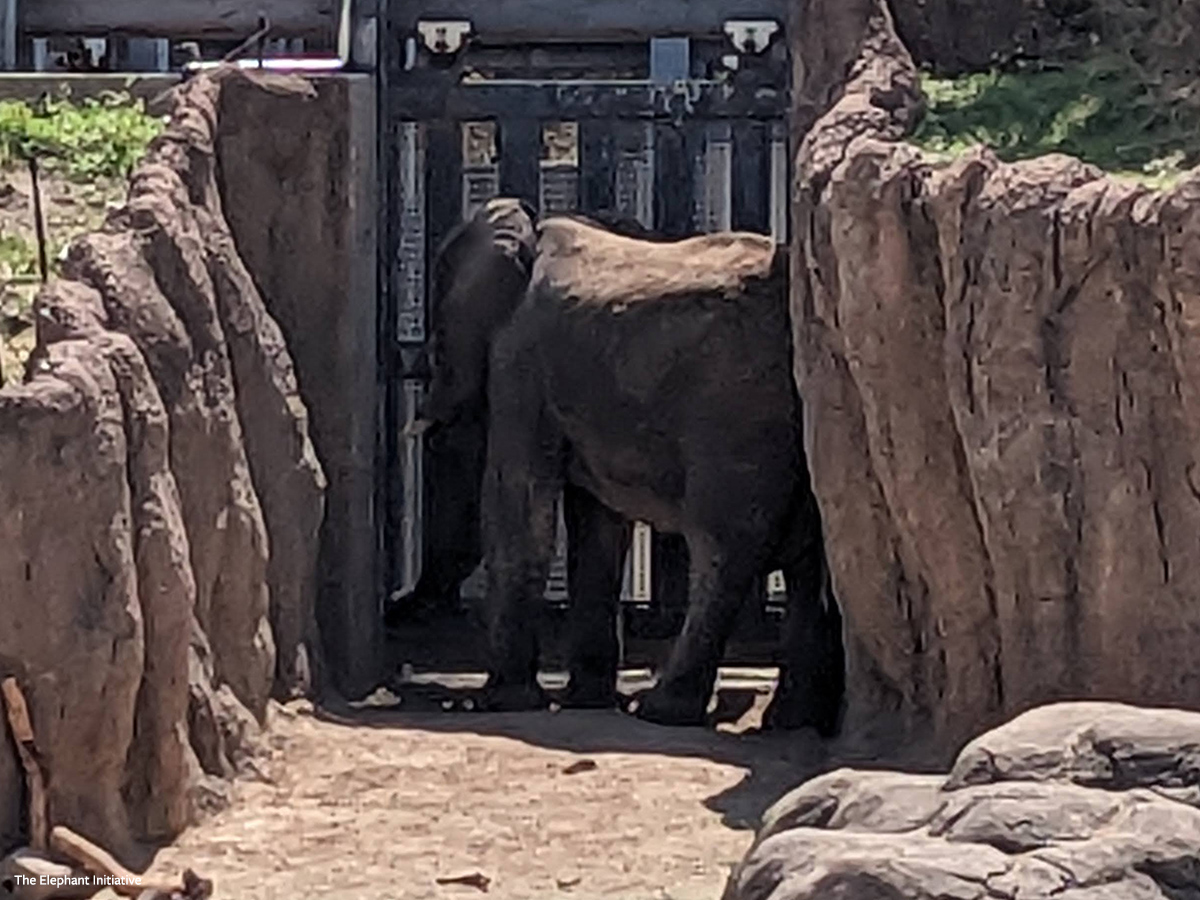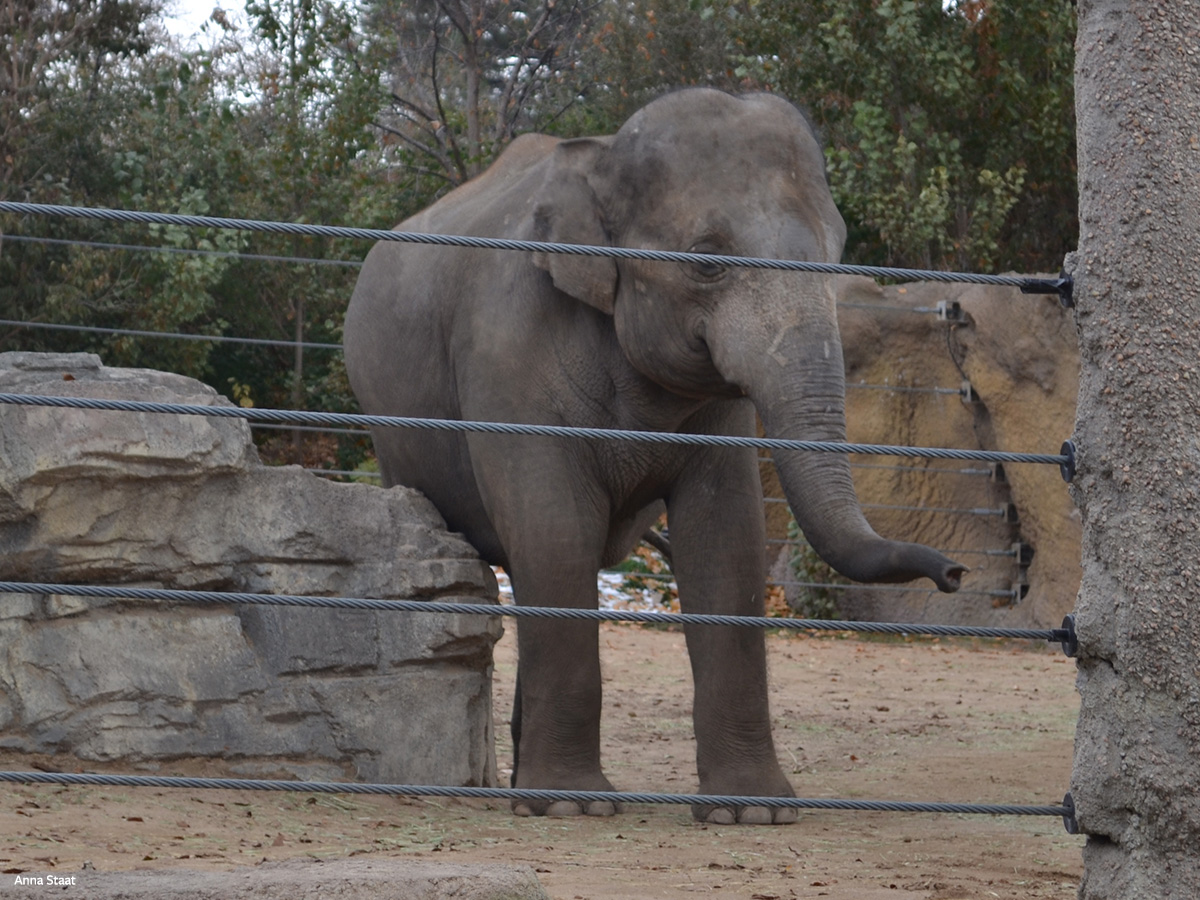For Male Elephants, Zoos Are Hell on Earth
No elephant is suited to captivity, but this is especially true for the males who, due to their size, can weigh up to 7 tons. Discover for yourself why bull elephants are suffering so badly in zoos.
Bull elephants are a force of nature, born to roam for miles in forests or savannas in their home countries in Asia and Africa. They tear through vegetation, uprooting a vast array of plants and grasses, and knock down giant tree branches with their massive 100-pound tusks.
They search and compete for mates, and like females, have social relationships that are important to them.
All these natural bull elephant activities are driven by their DNA programming. All of them are needed to keep male elephants fit, strong, and virile. None are possible in captivity. No zoo has adequate space for a bull elephant to unleash his boisterous wild nature.

Bull Elephants in Zoos
In zoos, bulls live stifled, stagnant lives in tiny enclosures, with nowhere to go and nothing to do, day after day, year after year, often for decades. The lack of space significantly reduces their welfare. In time, they develop zoochosis, which is exhibited by stereotypic behaviors, such as bobbing, pacing, swaying side to side, or sometimes swinging their trunks restlessly, in utter boredom and frustration.
Their muscles weaken, and their feet develop painful foot rot due to standing in one place for hours or on hard surfaces. Elephants are designed for movement, lots of it; without it, they deteriorate physically and mentally. Eventually, their brains decay from the forced deprivations of life in a zoo, and they suffer brain damage.

Musth Madness
Bull elephants go through musth, a sexual reproduction phase that typically occurs annually, depending on their health and age. It is characterized by high levels of testosterone and a surge in energy, during which they show heightened aggression and unpredictability.
It is easy to see when a male is in musth. A secretion of a hormone-rich substance, temporin, oozes from his facial glands, and a trickle of urine runs down his back legs. While this is a natural occurrence for wild elephants, it can be highly problematic for captive males.
Musth can last anywhere from a few days to a month or more. In captivity, the heightened aggressiveness associated with musth is exacerbated, and musth can last for much longer. This is due to the lack of space and a stagnant, unnatural environment.
In the wild, elephants can tear off into the forest or savanna and take out their aggression by knocking down trees or fighting with another male for the attention of a female. There is no opportunity for a male to work off this giant spurt of raw energy in a zoo.
In their hormonal rage, males attack "enrichment" objects in their enclosure, such as tires, or structures that imprison them, such as iron bars or concrete walls, breaking their tusks. Many males in zoos have injured or missing tusks. Without their tusks, males are vulnerable to aggression from other males, if there are any.
A Solitary Existence
Males are often confined alone in zoos, especially during musth. We now know that males enjoy and need companionship, just as female elephants do, and adult male elephants serve a valuable social function to elephant society by mentoring young males.
Upon reaching their teenage years, they strike out independently, leaving their mother and siblings behind. They return to visit and for mating, and they also join bachelor herds and form lasting friendships with other males.
Even the Association of Zoos & Aquariums agrees that male elephants should not be completely isolated. However, their standards are vastly insufficient to provide for male elephants' needs.
"Adult males (six years and older) may be housed alone, but not in complete isolation. Opportunities for tactile, olfactory, visual, and/or auditory interaction with other elephants must be provided."
— AZA Standards for Elephant Management and Care
Breeding Death & Disease
In zoos, bulls have one vital job: to breed more elephants. Zoos attempt to achieve this by housing males in musth with females who are in their reproductive cycle called estrus. If that is not successful or possible, zoos resort to procuring sperm from males to impregnate females using artificial insemination (AI). Extracting sperm amounts to anal rape of the male, and this procedure is repeated and repeated until the desired amount and quality of sperm are produced. This procedure has a high failure rate, but zoos continue to use it because of their desperation to produce crowd-pleasing babies. Sadly, many babies are stillborn, die shortly after death, or die at very young ages from elephant endotheliotropic herpes virus (EEHV). AI also results in three times as many male offspring as females. This is a huge problem for zoos as males are notoriously difficult to manage in captivity.
It's Time To Give Bulls a Break
The only way to end this cycle of disease, death, and despair is to stop breeding elephants in zoos, stop importing them from the wild, send the beleaguered bulls to sanctuary, and finally close elephant exhibits, as 34 zoos have already done. In the U.S., several males are happily retired to sanctuary. The same is true in Asia and Africa, where hundreds of elephants have been rescued and rewilded back into the forests and savannas of their home countries.
Learn more about how zoos harm elephants and how you can help by visiting our Elephants campaign.

